On October 26…
“Mr. President, we and you ought not now to pull on the ends of the rope in which you have tied the knot of war, because the more the two of us pull, the tighter that knot will be tied … if there is no intention to tighten that knot and thereby to doom the world to the catastrophe of thermonuclear war, then let us not only relax the forces pulling on the ends of the rope, let us take measures to untie that knot. We are ready for this.”
~Nikita Khrushchev
Letter to President John F. Kennedy
October 26, 1962
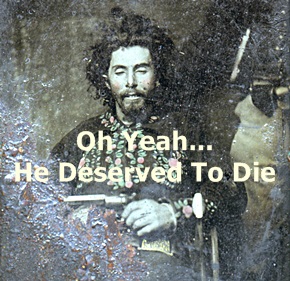
1864 – William “Bloody Bill” Anderson, one of the deadliest and most notorious pro-Confederate guerrilla leaders in the Civil War, was killed by Union soldiers.
As a Captain of Quantrill’s Raider, Anderson and his bloodthirsty troops took part in Quantrill’s Raid on Lawrence, Kansas, during which 183 men and boys were dragged from their homes and murdered them in front of their families before the raiders set a torch to much of the town.
Anderson went even further with his acts of terror when he and his soldiers took part in a deadly massacre that took place in Centralia, Missouri, on September 27, 1864.
Anderson’s crew got drunk and set fire to the city, robbing half the stores. When the noon passenger train arrived, Anderson’s men boarded it, robbed everyone, and forced 24 uniformed – and unarmed – Union soldiers to get off the train.
Anderson stripped off their jackets, lined them up, and shot them in the head, one by one.
A few hours later, a militia unit under Major A.V.E. Johnson arrived on the scene, responding to the disturbance with a force of 120 men from the 39th Missouri Infantry, but they rode straight into a trap.
Anderson and his men – wearing the Union jackets they had taken hours earlier – ambushed the inexperienced troops, rode them down, killed anyone who tried to surrender, then executed all the wounded.
Union military leaders, desperate to stop the maniacal Anderson, assigned Lieutenant Colonel Samuel P. Cox to kill him, providing Cox with a group of experienced soldiers. He pursued Anderson’s group with 150 men and engaged them in battle.
Anderson and his men charged the Union forces, killing five or six of them, but turned back under heavy fire. Only Anderson and one other man continued to charge after the others had retreated. Anderson was hit by a bullet behind his ear, killing him (as shown above) instantly.
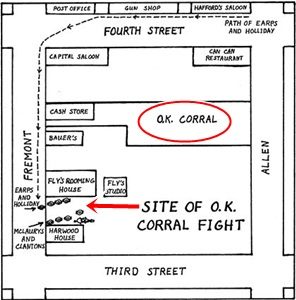
1881 – Wyatt Earp, his two brothers and “Doc” Holliday confronted Ike Clanton’s gang in a gunfight at the O.K. Corral in Tombstone, Ariz.
The most famous shootout in the history of the American Wild West, the gunfight was the result of a long-simmering feud, with Billy Claiborne, Ike and Billy Clanton, and Tom and Frank McLaury on one side and town Marshal Virgil Earp, Special Policeman Morgan Earp, Special Policeman Wyatt Earp, and Doc Holliday on the other side.
Despite its name, the gunfight did not take place within or even next to the O.K. Corral, which fronted Allen Street. It actually took place in a narrow lot between C.S. Fly’s Boarding House and the William Harwood house on Fremont Street.
Some members of the two opposing parties were initially only about 6 feet apart. About 30 shots were fired in 30 seconds.
Billy Clanton and both McLaury brothers were killed. Ike Clanton, Billy Claiborne, and Wes Fuller ran from the fight.
Virgil, Morgan, and Doc Holliday were wounded, but Wyatt Earp was unharmed.
Sheriff John Behan of Cochise County, who witnessed the shootout, charged the Earp brothers and Holliday with murder. A month later, however, a Tombstone judge found the men not guilty, ruling that they were “fully justified in committing these homicides.”
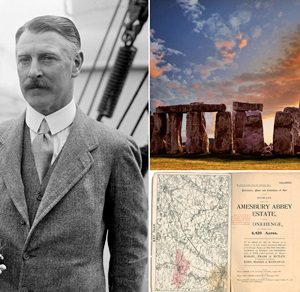
1918 – Cecil Chubb made a very generous donation.
About two weeks before the end of the First World War, Chub passed the Stonehenge prehistoric monument into public ownership via a deed of gift.
He had bought the property, described as a “place of sanctity dedicated to the observation or adoration of the sun,” at a public auction in 1915 for £6600 (equal to $982,000 today)
According to popular legend, Chubb bought Stonehenge for his wife as a birthday present.
Unfortunately, she was not too impressed.
It has also been speculated that apart from purchasing Stonehenge out of love for his wife, Cecil was also motivated to make the purchase for more patriotic reasons.
One of the rumors is that Cecil had bought Stonehenge to prevent it from falling into the hands of rich Americans who were said to be setting their sights on antiquities everywhere.
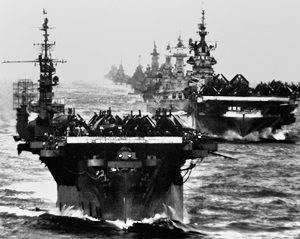
1944 – The Battle of Leyte Gulf ended with an overwhelming American victory.
The largest naval battle of World War II and possibly the largest naval battle in history, the battle consisted of four main separate engagements: the Battle of the Sibuyan Sea, the Battle of Surigao Strait, the Battle of Cape Engano and the Battle of Samar.
This was the first battle in which Japanese aircraft carried out organized kamikaze attacks, and the last naval battle between battleships in history.
During the 4-day epic series of battles, the U.S. lost 7 warships (and 3,000 men) while the Japanese lost 28 warships (and 13,000 men).
The Japanese Navy never sailed in comparable force again, stranded for lack of fuel in their bases for the rest of the war.
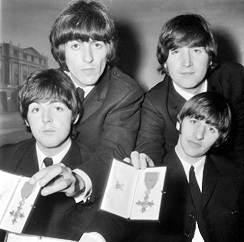
1965 – At Buckingham Palace, The Beatles receive their MBE (Member of the British Empire) medals from Queen Elizabeth II.
The Beatles were taken to the Great Throne Room in time for the 11am ceremony. The Lord Chamberlain, Lord Cobbold, read out The Beatles’ names individually, at which they stepped forward and bowed.
The Queen shook their hands, spoke to them, and pinned the medals to their jacket lapels. They then stepped back into line and bowed again.
Medal Factoid: In 1967, they wore them for the album cover photograph of Sgt. Pepper’s Lonely Hearts Club Band.
Medal Factoid #2: In 1969, John Lennon returned his in protest at British involvement in the Biafran war, Vietnam and “against Cold Turkey slipping down the charts.”
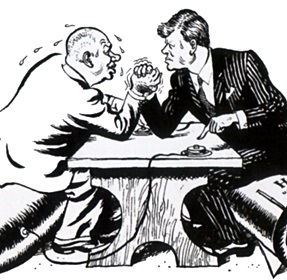
1962 – The Cuban Missile Crisis continued…
President John F. Kennedy believed only an invasion would remove the missiles from Cuba. He was persuaded to give the matter more time and continue with both military and diplomatic pressure. He agreed and ordered the low-level flights over the island to be increased from two per day to once every two hours.
The Soviets had shown no indication that they would back down and had made several comments to the contrary. The U.S. had no reason to believe otherwise and was in the early stages of preparing for an invasion, along with a nuclear strike on the Soviet Union if it responded militarily, which was assumed.
Kennedy had no intention of keeping these plans a secret; with an array of Cuban and Soviet spies forever present, Khrushchev was quickly made aware of this looming danger.
That evening, the State Department received a message that appeared to be written personally by Nikita Khrushchev.
“I propose: we, for our part, will declare that our ships bound for Cuba are not carrying any armaments. You will declare that the United States will not invade Cuba with its troops and will not support any other forces which might intend to invade Cuba. Then the necessity of the presence of our military specialists in Cuba will disappear.”
Meanwhile, Fidel Castro was convinced that an invasion of Cuba was soon at hand, and he sent a telegram to Khrushchev that appeared to call for a pre-emptive nuclear strike on the U.S. in case of attack.
The story continues tomorrow.

1984 – The Terminator, directed by James Cameron and starring Arnold Schwarzenegger and Linda Hamilton, premiered in U.S. theaters.
Filmed on a budget of $6.4 million, the movie earned $78 million at the box office and led to four sequels.
A fifth sequel, Terminator: Dark Fate, is set for release in November 2019.
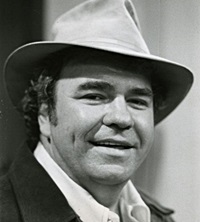
1999 – Singer/songwriter Hoyt Axton died after suffering two heart attacks. He was 61.
He released several albums of his own and recorded commercials for Pizza Hut, McDonald’s and Busch Beer, but that’s not what he is remembered for.
His most lasting contributions were songs made famous by others: Joy To The World and Never Been To Spain (Three Dog Night), Greenback Dollar (Kingston Trio), The Pusher and Snowblind Friend (Steppenwolf), and No-No Song (Ringo Starr).
Thanks, Mom Factoid: Axton’s songwriting ability came naturally. His mother, Mae Boren Axton, co-wrote Heartbreak Hotel, which became a major hit for Elvis Presley.
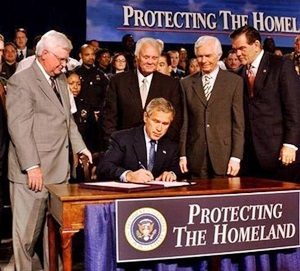
2001 – President George W. Bush signed the USA Patriot Act, giving authorities unprecedented ability to search, seize, detain or eavesdrop in their pursuit of possible terrorists.
Did You Know Factoid: The act’s name stands for “Uniting and Strengthening America by Providing Appropriate Tools Required to Intercept and Obstruct Terrorism”.
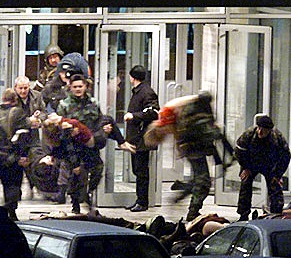
2002 – A 4-day hostage siege by Chechen rebels at a Moscow theater ended with 129 of the 800-plus captives dead, most of them from a knockout gas used by Russian special forces who stormed the theater.
The attackers, led by Movsar Barayev, the nephew of the notorious Chechen warlord Arbi Barayev, claimed allegiance to the Islamist separatist movement in Chechnya, and demanded the withdrawal of Russian forces from Chechnya and an end to the Second Chechen War.
All 40 of the insurgents were killed due to poisoning by the gas.
Compiled by Ray Lemire ©2019 RayLemire.com / Streamingoldies.com. All Rights Reserved.